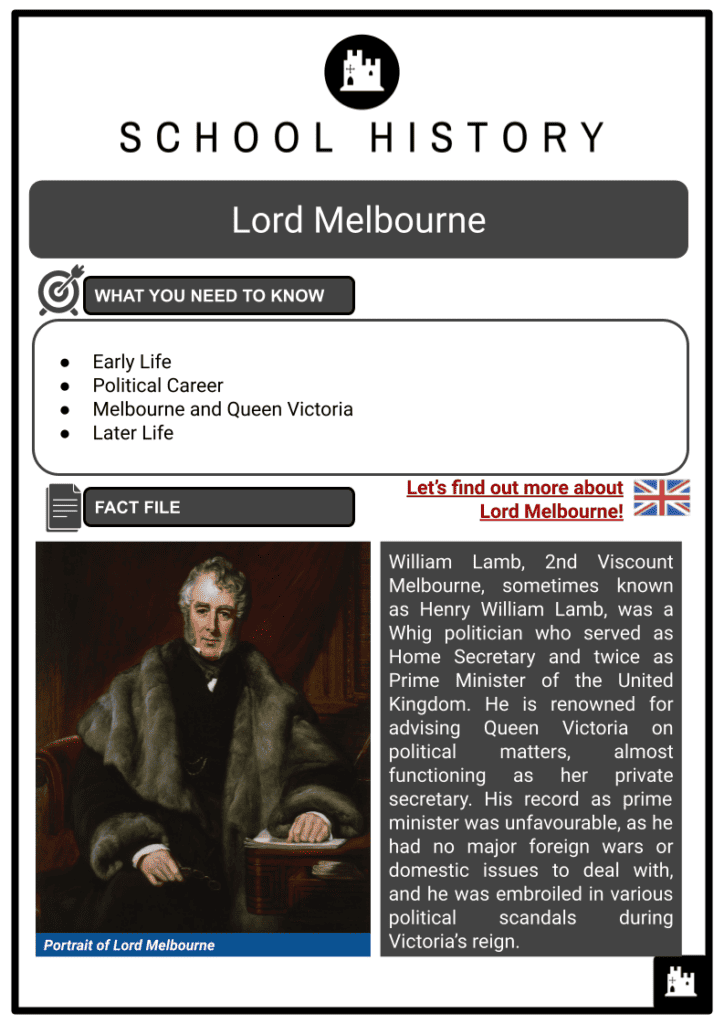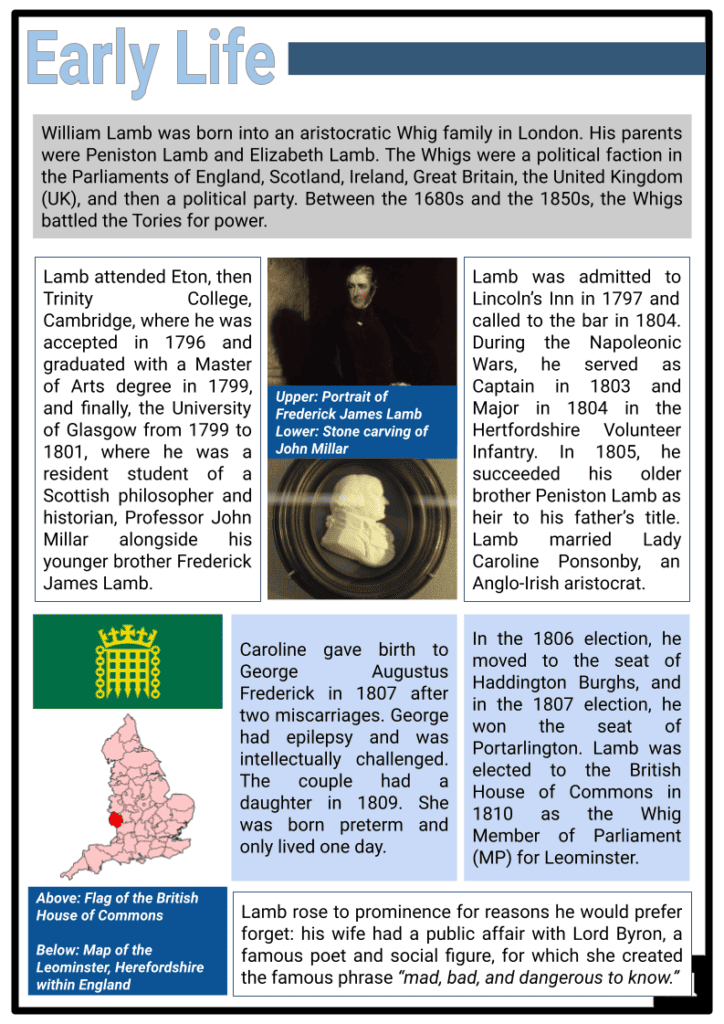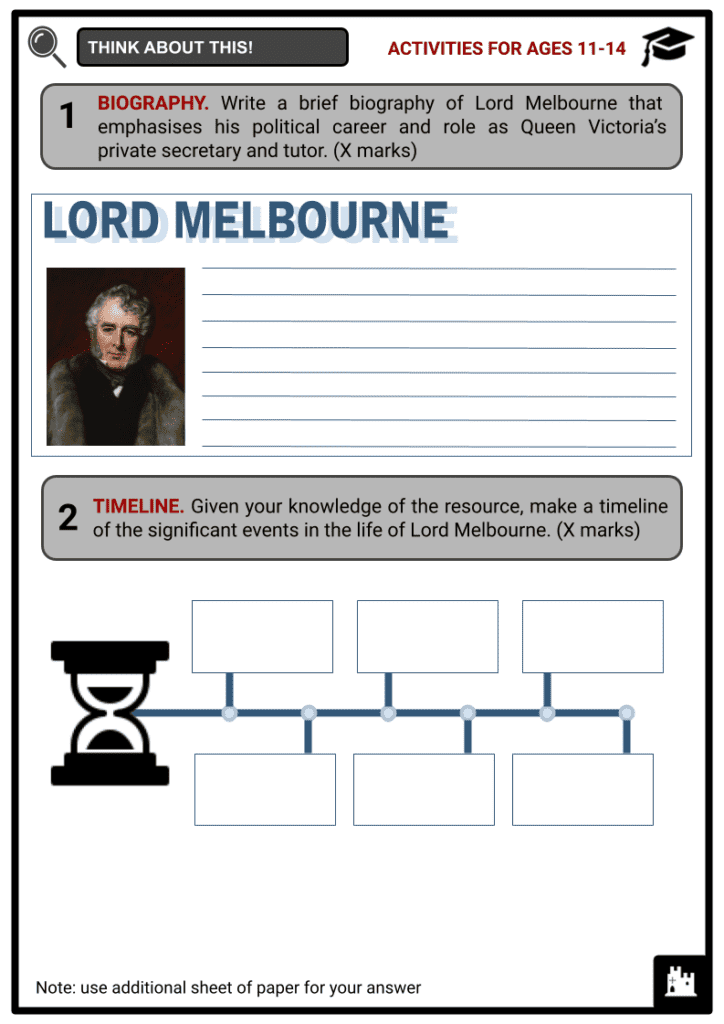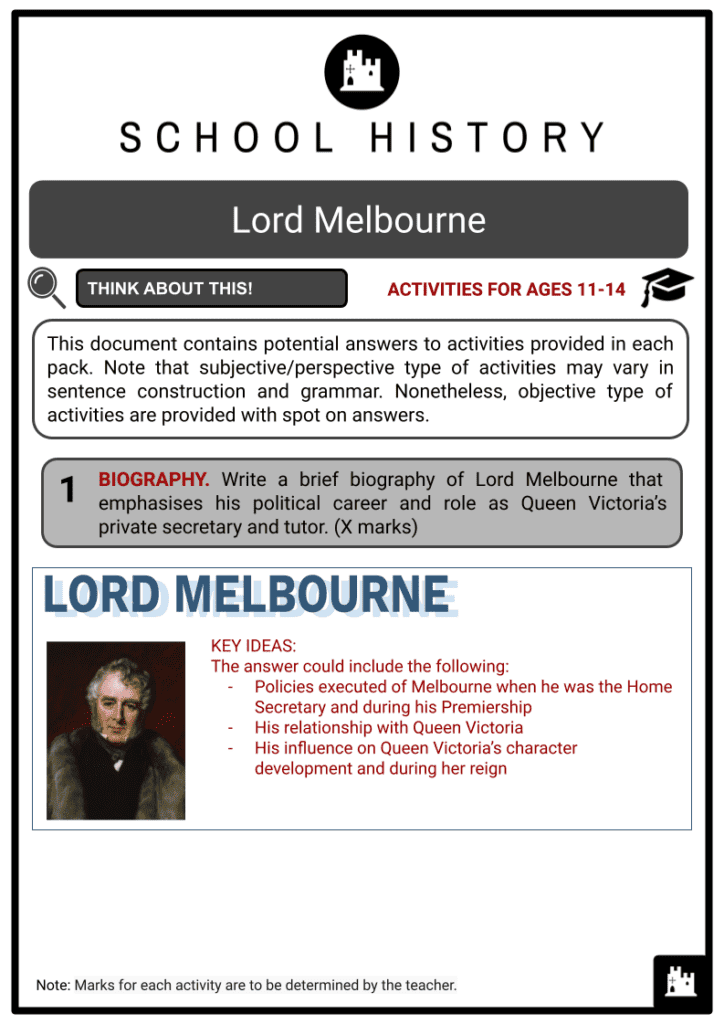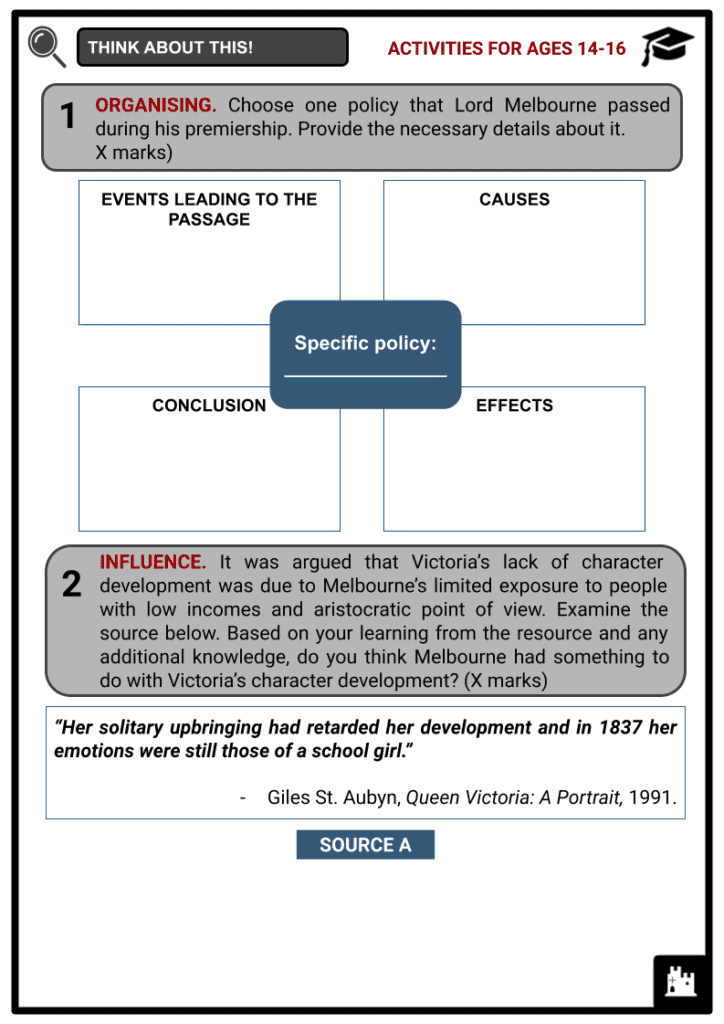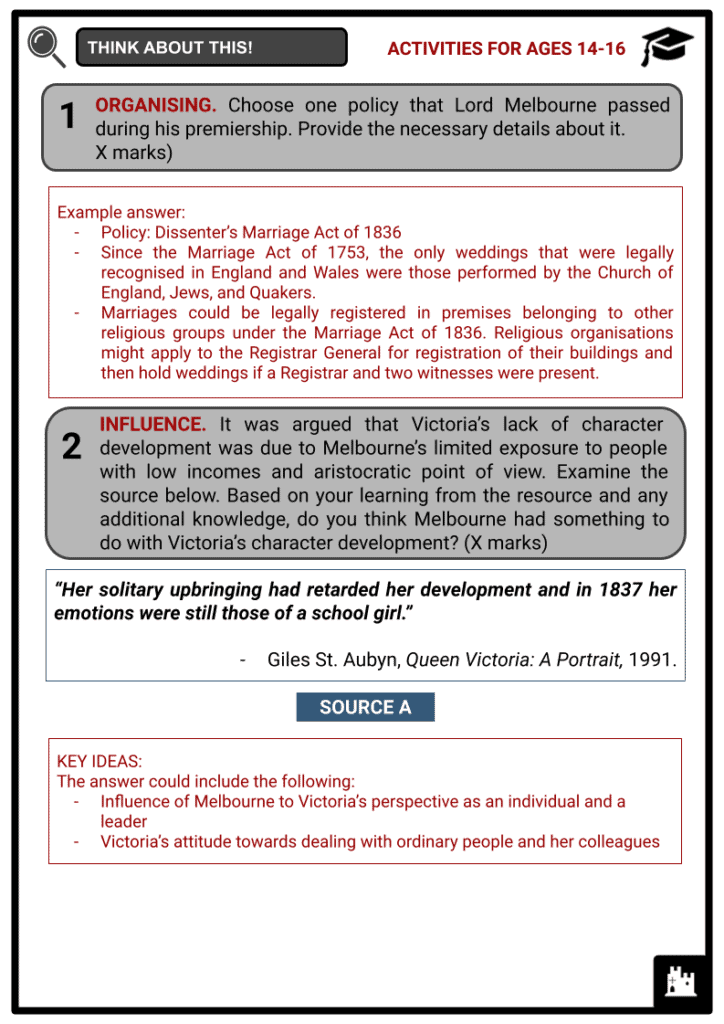Lord Melbourne Worksheets
Do you want to save dozens of hours in time? Get your evenings and weekends back? Be able to teach about Lord Melbourne to your students?
Our worksheet bundle includes a fact file and printable worksheets and student activities. Perfect for both the classroom and homeschooling!
Summary
- Early Life
- Political Career
- Melbourne and Queen Victoria
- Later Life
Key Facts And Information
Let’s find out more about Lord Melbourne!
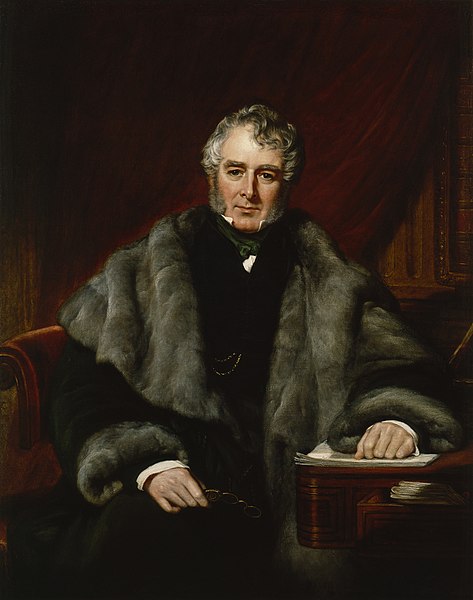
William Lamb, 2nd Viscount Melbourne, sometimes known as Henry William Lamb, was a Whig politician who served as Home Secretary and twice as Prime Minister of the United Kingdom. He is renowned for advising Queen Victoria on political matters, almost functioning as her private secretary. His record as prime minister was unfavourable, as he had no major foreign wars or domestic issues to deal with, and he was embroiled in various political scandals during Victoria’s reign.
EARLY LIFE
- William Lamb was born into an aristocratic Whig family in London. His parents were Peniston Lamb and Elizabeth Lamb. The Whigs were a political faction in the Parliaments of England, Scotland, Ireland, Great Britain, the United Kingdom (UK), and then a political party. Between the 1680s and the 1850s, the Whigs battled the Tories for power.
- Lamb attended Eton, then Trinity College, Cambridge, where he was accepted in 1796 and graduated with a Master of Arts degree in 1799, and finally, the University of Glasgow from 1799 to 1801, where he was a resident student of a Scottish philosopher and historian, Professor John Millar alongside his younger brother Frederick James Lamb.
- Lamb was admitted to Lincoln’s Inn in 1797 and called to the bar in 1804. During the Napoleonic Wars, he served as Captain in 1803 and Major in 1804 in the Hertfordshire Volunteer Infantry. In 1805, he succeeded his older brother Peniston Lamb as heir to his father’s title. Lamb married Lady Caroline Ponsonby, an Anglo-Irish aristocrat.
- Caroline gave birth to George Augustus Frederick in 1807 after two miscarriages. George had epilepsy and was intellectually challenged. The couple had a daughter in 1809. She was born preterm and only lived one day.
- In the 1806 election, he moved to the seat of Haddington Burghs, and in the 1807 election, he won the seat of Portarlington. Lamb was elected to the British House of Commons in 1810 as the Whig Member of Parliament (MP) for Leominster.
- Lamb rose to prominence for reasons he would prefer forget: his wife had a public affair with Lord Byron, a famous poet and social figure, for which she created the famous phrase “mad, bad, and dangerous to know.”
- Caroline’s best-selling autobiographical novel Glenarvon, which revealed her romantic experiences and her husband’s complicity, contributed to Lamb’s shame. She eventually had an irreversible psychological breakdown. Caroline died in 1828 after they were formally separated in 1825. Their son George died in 1836 due to significant developmental problems.
POLITICAL CAREER
- Whig grandee Lord Fitzwilliam returned Lamb for Peterborough in 1816. Lamb told Lord Holland that he supported the Whig ideas of the Glorious Revolution. The Glorious Revolution was a series of events in 1688-89 that ended in King James II’s exile and William and Mary’s succession to the throne. It has also been regarded as a watershed moment in the evolution of the constitution, particularly the role of Parliament.
- As a result, Lamb spoke out against legislative reform and voted to suspend habeas corpus in 1817, when agitation was rampant. On 29 April 1827, despite being a Whig, he accepted the position of Chief Secretary for Ireland in the moderate Tory government of George Canning and Lord Goderich.
- Lamb moved to the House of Lords after his father died in 1828, and he became the 2nd Viscount Melbourne of Kilmore in the County of Cavan. He had spent twenty-five years in the Commons, mostly as a backbencher, and was not widely known politically.
- In 1830, Wellington’s government fell, and Melbourne accepted a cabinet job as Home Secretary under the new Whig Prime Minister Lord Grey, with the primary task of maintaining law and order. This was a challenging obligation in an era of considerable social unrest and agitation during the Swing Riots in a country that lacked a modern police force.
- The Swing Riots were a mass rebellion in 1830 in southern and eastern England by agricultural workers protesting agricultural mechanisation and poor working conditions. It began in the summer of 1830 with the destruction of threshing machines in the Elham Valley area of East Kent and, by early December, had spread throughout southern England and East Anglia.
- Though Melbourne avoided the worst oppressive tactics, he vigorously suppressed unauthorised protests and appeared to lack sympathy for the underlying issues of the lower classes.
- Melbourne was responsible for the conviction and transportation of a group of poor labourers known as the Tolpuddle Martyrs using an obscure statute forbidding members of societies from taking unauthorised oaths.
- The conviction of the Tolpuddle Martyrs sparked widespread outrage, which Melbourne ignored, and the convicted labourers were pardoned a year later. Melbourne was a reluctant supporter of the 1832 Parliamentary Reform Bill, which expanded the franchise and abolished some parliamentary districts with a small number of electorates controlled by a specific interest.
Premiership
- Lord Grey resigned as Prime Minister in early 1834, and Melbourne became his successor. Lamb commanded a government that was still influenced by Grey and was not strongly backed by King William IV, and Lamb was forced to retire at the end of 1834 with no achievements.
- The Lichfield House Compact, an alliance of Whigs, Radicals, and Irish in which Melbourne was not a major member, brought down the new Tory Prime Minister Robert Peel after only a few months in office.
- Following Peel’s resignation, Melbourne was named Prime Minister once more. He held together a shaky coalition ministry of egotistical Radicals and Whigs with opposing agendas, with the tenuous support of Irish MPs and the tacit permission of more liberal Tories.
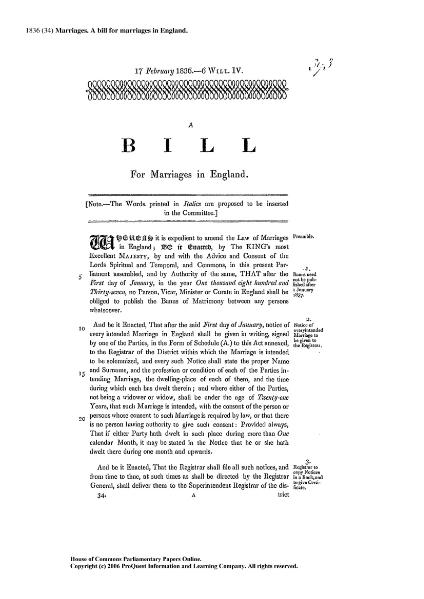
Page in the Dissenter’s Marriage Bill 1836 - The ministry, which did not have William IV’s entire support, was challenged by the House of Lords’ most ultra-Tory members.
- Melbourne was philosophically opposed to continuous radical reform, believing that the country required time to adjust to the Reform Bill, but was willing to yield when popular opinion demanded it. He gave cabinet members a lot of freedom stylistically and acted as a mediator and conciliator at cabinet meetings.
- After years of disagreeing, Lamb’s government passed the Irish Tithe Bill, which altered the taxation that the Catholics were required to pay to the Irish Anglican Church. At the same time, attempts to divert Church funds to secular purposes were unsuccessful. Melbourne’s government approved the Municipal Corporation Act in 1835, considerably enhancing city government management and representation.
- The government also passed the Dissenter’s Marriage Bill in 1836, which legalised marriage outside the Church of England. Supporting the radicals, Melbourne pushed for penny postage, which opened up the mail system to the masses and was a democratising factor in England; yet, he supported the suppression of the Chartist movement, which demanded universal suffrage and other democratic concepts.
MELBOURNE AND QUEEN VICTORIA
- The most important chapter in Lamb’s political career began in 1837, when William IV died, resulting in the succession of his niece, the eighteen-year-old Queen Victoria. Victoria, who grew up in a restricted and isolated atmosphere, ruled by her mother and her mother’s adviser, Sir John Conroy, was fond of Melbourne’s personality.
- Melbourne and Victoria’s connection blossomed but focused on their political interest. They spent up to six hours a day together during Victoria’s reign, with Melbourne functioning as part Prime Minister and as Private Secretary of Victoria. Melbourne amused the Queen with his opinions on history, religion, politics, politicians, and life, appealing to his perfectionist nature.
- Melbourne instilled in the Queen a sense of self-confidence, respect for the monarchy, and the importance of doing her duty. Despite this, he has been accused of failing to develop her social consciousness based on his cynical observations on education and people with low incomes.
- Overall, Melbourne was meticulous with Queen Victoria, although he could be overly concerned at times, which harmed her. For example, when Victoria falsely accused her mother’s unmarried maid of honour, Flora Hastings, of being pregnant, Melbourne was unconcerned about Hastings and her family’s humiliation. When the episode became public, opinion swung strongly against him and Victoria.
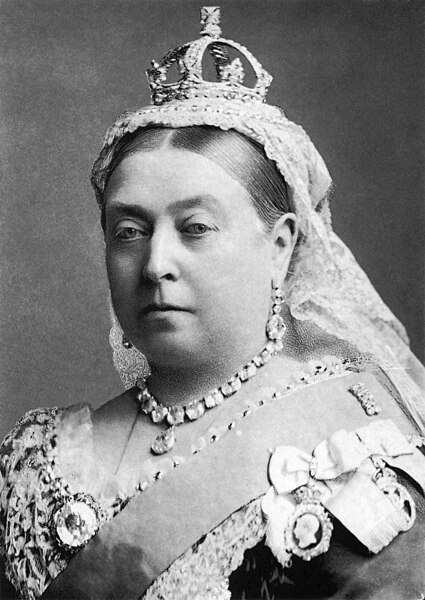
Queen Victoria - During the Bedchamber Crisis of 1839, Melbourne’s cabinet was dissolved due to discord, and Robert Peel became Prime Minister again. When Queen Victoria rebuffed Peel’s fair request to replace some of her bedchamber’s Whig ladies with Tories, Peel resigned, and the Queen reappointed Lamb as Prime Minister. Unfortunately for Melbourne, his time with Victoria was limited. The Queen’s maturing, her marriage to the sincere Prince Albert, Melbourne’s physical ageing, and the increasing deterioration and eventual fall of his government in 1841 all contributed to the end of their particular relationship.
- After Melbourne left office, Victoria’s new counsellors forbade her to talk to Melbourne. As a result of their influence and her developing self-confidence, Victoria appeared to minimise the unique role he played in her life.
LATER LIFE
- Despite being frail, Melbourne survived a stroke on 23 October 1842, fourteen months after leaving politics. He spent his retirement at Brocket Hall in Hertfordshire. On 24 November 1848, he died at home and was buried nearby at St Etheldreda’s Church in Hatfield, Hertfordshire.
- After Caroline’s two miscarriages, George was the sole child to survive delivery. However, Melbourne’s titles were passed to his brother, Frederick, upon his death, as his son, George, had predeceased him.
- Melbourne, despite not being a great political leader or innovator, provided a source of stability and moderation in government during a time of immense instability and change. He played an important role in England’s relatively smooth transition to democracy, as well as in educating and moulding Queen Victoria.
Frequently Asked Questions
- Who was Lord Melbourne?Lord Melbourne, full name William Lamb, 2nd Viscount Melbourne, was a British statesman who served as Prime Minister of the UK in the 1830s and 1840s.
- What happened to Lord Melbourne after Victoria married?After Queen Victoria married Prince Albert in 1840, her close relationship with Lord Melbourne changed. She began relying more on her husband for advice and support, diminishing Lord Melbourne's influence. While they remained on friendly terms, Victoria's marital union shifted her reliance away from Lord Melbourne.
- Who is the current Lord Melbourne?The title became extinct after the death of Frederick Lamb, the 3rd Viscount Melbourne, in 1853, as he had no male heirs to inherit the title.

